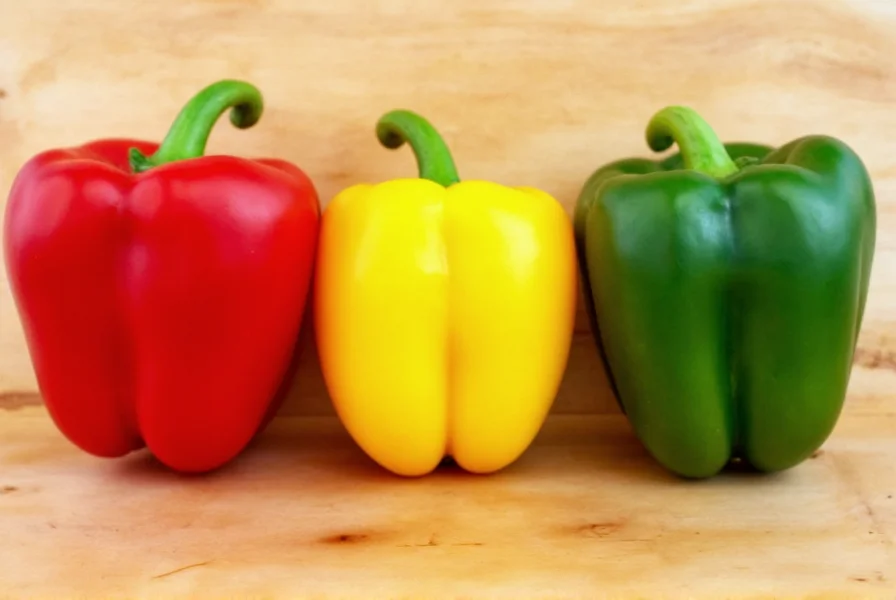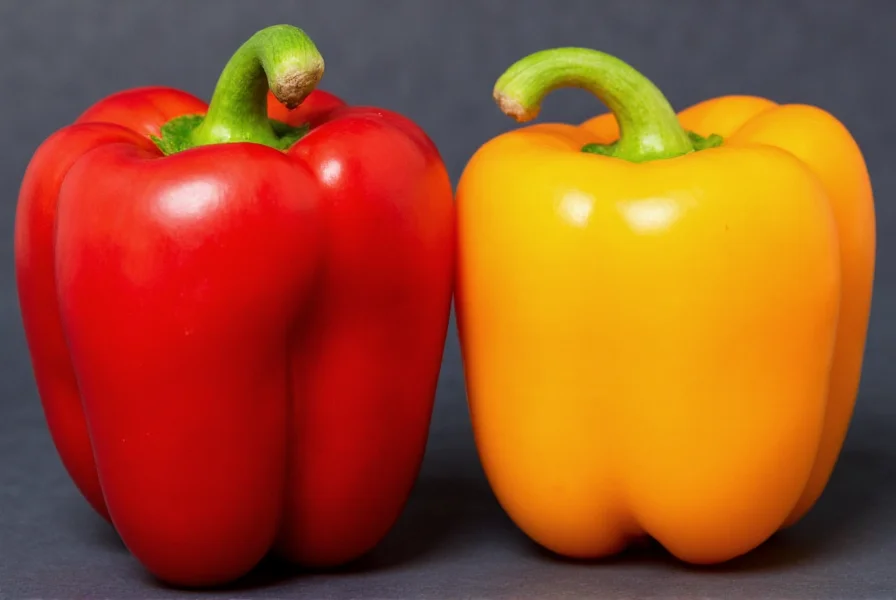Understanding the capsicum vs bell pepper terminology confusion begins with botanical facts. Both terms describe non-pungent cultivars of Capsicum annuum, part of the nightshade family (Solanaceae). These sweet peppers exist in multiple colors—green, yellow, orange, red, purple, and even chocolate brown—depending on ripeness and variety, but share identical genetic makeup regardless of regional naming preferences.
Botanical Classification Explained
All bell peppers/capsicums belong to the species Capsicum annuum, which also includes spicy varieties like jalapeños and cayenne peppers. The critical difference lies in a recessive gene that prevents non-spicy varieties from producing capsaicin, the compound responsible for heat in peppers. This genetic variation creates the sweet, crunchy vegetables known globally by different names.
| Color Variation | Ripeness Stage | Flavor Profile | Vitamin C Content (per 100g) |
|---|---|---|---|
| Green | Unripe | Grassy, slightly bitter | 80mg |
| Yellow | Partially ripe | Sweeter, fruitier | 137mg |
| Orange | Partially ripe | Balanced sweet-tart | 147mg |
| Red | Fully ripe | Sweetest, complex flavor | 190mg |
Regional Terminology Differences
The capsicum vs bell pepper naming convention follows distinct geographic patterns:
- "Capsicum" usage: Predominates in India, Australia, New Zealand, South Africa, and the UK (though "pepper" is also common)
- "Bell pepper" usage: Standard in the United States, Canada, and the Philippines
- Other regional terms: "Sweet pepper" in Ireland, "pimiento" in Spain, "paprika" in Hungary (though paprika also refers to the spice)
This linguistic divergence stems from historical trade routes and colonial influences. British colonists adopted "capsicum" from the Latin term for the pepper family, while American English evolved toward "bell pepper" due to the vegetable's distinctive shape.

Nutritional Comparison
When examining capsicum vs bell pepper nutritional value, remember they're identical vegetables—only the name differs by region. All colors provide excellent vitamin C, but riper varieties contain significantly more nutrients:
- Red bell peppers contain nearly 9 times more beta-carotene and 1.5 times more vitamin C than green varieties
- All colors provide 100% of daily vitamin C requirements in a single medium pepper
- Yellow and orange varieties contain higher levels of carotenoids like lutein
- Green peppers have slightly more chlorophyll and lower sugar content
Common Misconceptions Clarified
Several persistent myths surround the capsicum vs bell pepper discussion:
Myth: Capsicums are a different species than bell peppers
Fact: They're identical botanically—just different regional names for Capsicum annuum cultivars.
Myth: All capsicums are spicy
Fact: The term "capsicum" refers to both spicy and non-spicy varieties globally, but in regions using this term, it typically means the sweet bell variety.
Myth: Green peppers are unripe and nutritionally inferior
Fact: While less ripe green peppers have different nutrient profiles, they contain higher levels of chlorophyll and are perfectly nutritious—just with a different flavor profile.
Culinary Applications
Understanding the capsicum vs bell pepper terminology helps when following international recipes. Chefs should note:
- Green varieties work best in dishes requiring structural integrity (stir-fries, fajitas)
- Red and yellow peppers add natural sweetness to sauces and roasted dishes
- In Indian cuisine (where they say "capsicum"), they're often used in bhajis and stuffed preparations
- Australian recipes might specify "red capsicum" for salads and Mediterranean dishes
The flavor differences between colors stem from ripeness rather than variety. Green peppers are harvested early, while red, yellow, and orange varieties remain on the plant longer, developing more sugars and complex flavors. This ripeness factor affects cooking—sweeter varieties caramelize faster and may require recipe adjustments.
Evolution of Terminology: A Historical Timeline
- 1493: Christopher Columbus introduces Capsicum species to Europe (Source: Encyclopedia Britannica)
- 1753: Carl Linnaeus classifies the plant as Capsicum annuum, deriving "Capsicum" from Greek "kapto" (to bite) (Source: Species Plantarum, Vol.1, p.188 and Merriam-Webster)
- Early 1800s: Bell-shaped sweet peppers developed in the United States (Source: University of Vermont Extension)
- 1845: First recorded use of "bell pepper" in English (Source: Merriam-Webster)
- 19th Century: "Capsicum" becomes standard in Commonwealth nations while "bell pepper" dominates in North America (Source: Merriam-Webster)
Contextual Usage Guidelines
Understanding when to use each term prevents confusion in international communication. Below are key contextual boundaries verified through linguistic and regulatory frameworks:
- Geographic Context:
- Use "capsicum" in India, Australia, New Zealand, and South Africa for the sweet bell variety
- Use "bell pepper" in the United States, Canada, and the Philippines
- Avoid "pepper" alone in the United States (as it usually means black pepper), but it's acceptable in the United Kingdom for bell peppers
- Culinary Context:
- In recipes, "capsicum" in Australian cookbooks refers to bell pepper; in Indian recipes, it may also refer to spicy varieties (context-dependent)
- When following European Union food labeling regulations, "sweet pepper" is the standardized term (Source: European Commission: Marketing Standards for Fruit and Vegetables)
- Linguistic Limitations:
- In Spanish-speaking countries, "pimiento" usually means bell pepper, but "pimienta" means black pepper—a common point of confusion
- The term "capsicum" in scientific literature refers to the entire genus (including spicy varieties), whereas in Commonwealth grocery stores it exclusively means sweet bell peppers
Shopping Tips for Global Cooks
When navigating the capsicum vs bell pepper terminology in international markets:
- Look for "sweet pepper" as a universal term in European markets
- Understand that "capsicum" in Australian grocery stores means bell peppers
- Recognize that "pimento" in Spanish markets refers to red bell peppers
- Know that some Indian recipes might call for " Shimla mirch" (Hindi for bell pepper)
Regardless of what you call them, selecting quality specimens involves checking for firmness, shiny skin, and heavy weight relative to size. Avoid peppers with wrinkles, soft spots, or dull coloring, which indicate age or improper storage.











 浙公网安备
33010002000092号
浙公网安备
33010002000092号 浙B2-20120091-4
浙B2-20120091-4